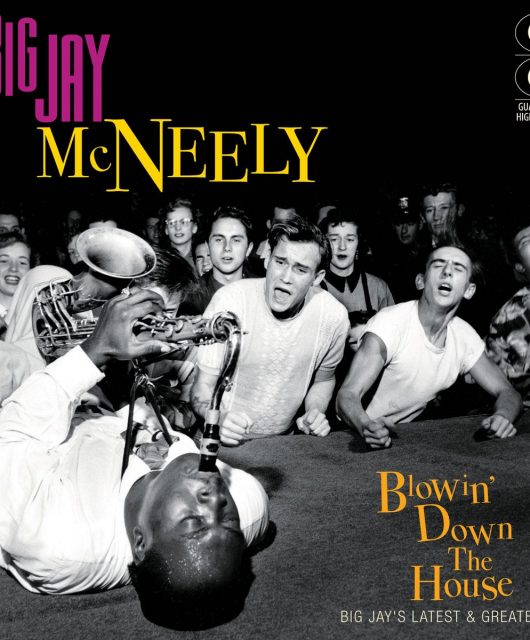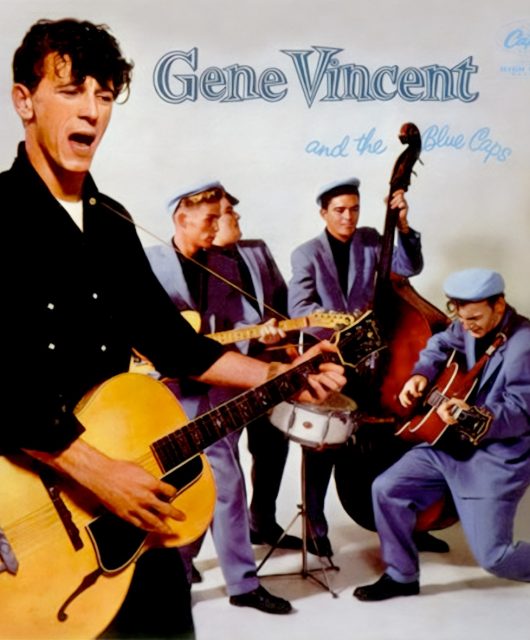It was difficult enough for The Crickets to attempt to cut an album without Buddy Holly. It was harder still after their legendary leader tragically died. But when it finally emerged, In Style With The Crickets was a cool classic. Here’s how a band fought folklore… and won… By Randy Fox
In December 1960, hardcore rock’n’roll fans were surprised by the appearance of In Style With the Crickets, the second album by the group many still considered ‘Buddy Holly’s band’. It had been over three years since the group’s first album, The Chirping Crickets, and almost two years since Holly’s death in the plane crash that shook the music world. Since that tragedy, the reorganised Crickets released four singles, none of which made a blip on the US charts. By the time of the album release, The Crickets were history, with the members scattered around the world and working in different professions.
What might have been a footnote on the band’s career was actually the beginning of another chapter in a convoluted story. The Crickets were originally formed in May 1957 as an alias for Buddy Holly. Holly had recorded the song That’ll Be The Day several months earlier as a solo artist for Decca Records. Even though his contract with Decca ended in January 1957, he was legally prohibited from re-recording any of his Decca material for five years. Despite the restriction, Holly and his band thought they had a winner with a new arrangement of That’ll Be The Day and were proven correct when The Crickets’ version was released by Brunswick Records and shot to No. 1 in September 1957.
Decca wasn’t fooled by Holly’s deception. After some legal wrangling (and Holly’s partial forfeiture of royalties), The Crickets continued recording for Brunswick and Holly also signed a second contract under his own name with Brunswick’s parent label, Coral Records.
In November 1958, Holly moved to New York City while the remaining Crickets — Jerry (JI) Allison and Joe B Mauldin — remained in Lubbock, Texas. As part of the amicable split, Holly ceded ownership of ‘The Crickets’, as well as the Brunswick recording contract, to Allison and Mauldin. In need of a lead singer, guitarist, and songwriter, the pair recruited long-time friend Sonny Curtis, who previously backed and recorded with Holly in 1956.
Over the next year, the trio worked off and on with producer Norman Petty in his Clovis, New Mexico studio, but Petty didn’t care for Curtis personally and considered his voice “too country” for rock’n’roll. As a result, The Crickets recruited another friend from Lubbock, Earl Sinks, to step in as the lead vocalist. With Sinks in place, the quartet recorded Love’s Made A Fool Of You, a song co-written by Buddy Holly and Bob Montgomery that Holly had never officially recorded.
Although The Crickets had high hopes for the song, Petty didn’t see much potential and refused to send the master tapes to New York. Yet upon Holly’s death in February 1959, Petty convinced Brunswick to rush-release the single. Failing to chart in the US, it reached No. 26 in the UK in April 1959.
Petty’s money-motivated change of heart was the last straw for The Crickets who considered rush-releasing the single disrespectful to Holly’s memory, and they broke ties with Petty. In the meantime, Holly’s death raised questions about the future of the group.
Receiving a summons from talent and booking agent Irving Feld, Allison, Curtis, Mauldin and Sinks drove to New York shortly after Holly’s funeral. Arriving in the Big Apple, the quartet met in Feld’s office with the band that had backed Holly on his last tour — Waylon Jennings, Tommy Allsup, Carl Bunch and Ronnie Smith. Sonny Curtis recalled the meeting in a 2013 interview: “Feld was going to take over and run things for The Crickets,” he said. “He told JI: ‘You need to choose who’s going to be The Crickets.’ So they chose JI, Joe B, Earl Sinks and Tommy Allsup. They shuffled me and the others out. The new Crickets stayed in New York and the rest of us drove back to Texas. As soon as JI and Joe B got back to Lubbock, JI called me and said, ‘Uh-uh, I take it back. That was Irving Feld’s idea. You’re in the band.’”
Even though the Curtis-less Crickets line-up only existed for a few weeks, Brunswick ushered the short-lived line-up into a photography studio for portraits. Allsup never performed on the group’s subsequent Brunswick recordings, but the photos featuring him were used by the record company for several years.
In May 1959, Allison, Curtis, Mauldin, and Sinks headed to New York to record tracks for a proposed Crickets album. During four sessions spread over the last two weeks of May and the first week of June, the quartet cut 10 songs, seven of which eventually appeared on In Style With The Crickets. In the months preceding the sessions, Curtis’ songwriting was firing on all cylinders as he delivered five songs (two solo compositions and three co-writes with fellow Crickets). They included the love ballad Deborah, the mid-tempo bopper When You Ask About Love and three crackerjack rockers – Just This Once, A Sweet Love, and the song that became Curtis’ most famous composition, I Fought The Law (popularised by The Bobby Fuller Four in 1966 and later by The Clash in 1979). As Curtis recalled, I Fought The Law almost wrote itself.
“I was just hanging out in my living room in Lubbock,” said Curtis. “It was real hot outside and the sand was blowing. I wrote I Fought The Law in about 20 minutes as more of a country song. On the way to New York, I played it in the car, and JI and Joe B said: ‘That’s a song that will work.’ I wrote the guitar lick for the intro in the car, and we got in the studio and JI added the snare drum triplets.”
In retrospect, it’s bewildering that Brunswick Record executives failed to see the hit potential of I Fought The Law, but the song was entirely overlooked as a single release in the US. Instead Brunswick chose When You Ask About Love, the most Holly-esque song from the New York sessions. Released in September 1959, the song missed the charts domestically but scored in Britain, rising to No. 27 in January 1960.
In the meantime, Brunswick shelved plans for The Crickets’ album based on the poor performance of the single. With the album now on hold and with no management agency to handle live bookings, The Crickets’ career floundered for several months. “We were just a bit rudderless,” Curtis explained. “Toward the end of 1959 we got together with The Everly Brothers. Don and Phil were going on the road and we were touring with them. They didn’t have a band. They would get in these towns and call up the [Musicians’] Union to send guys over and that led to some real disasters. One night in Florida, they got in a situation where they couldn’t find a band, so The Crickets backed the Everly Brothers. The show was out there in the ether it was so good.”
By this point, the core trio of Allison, Mauldin and Curtis had relocated to Los Angeles, pursuing session work – and playing with the Everly Brothers re-energised the band.
In November and December 1959, Earl Sinks joined The Crickets in LA for two sessions, with the group’s new manager Charles ‘Bud’ Dant producing. The goal was to record a new single release and finish up tracks for the still unreleased album. The session produced two strong cover tunes — Great Balls Of Fire and Rockin’ Pneumonia And The Boogie Woogie Flu, but the rest of the tracks with Sinks on lead vocals were deemed too weak for a single release. Sinks returned home to Lubbock and the remaining Crickets decided to proceed as a trio.
The Crickets returned to the studio in February 1960 with Curtis on lead vocals. There were two standouts from the four-song session: a catchy Curtis-penned mid-tempo rocker Baby My Heart and the lilting love ballad More Than I Can Say, co-written and sung as a duet by Curtis and Allison. Released in April 1960, just as The Crickets departed for a UK tour backing the Everly Brothers, the single missed the US chart, but became a double-sided hit in the UK, with Baby My Heart hitting No. 33 and More Than I Can Say hitting No. 42.
When they returned home, Curtis had an unpleasant surprise waiting for him: his army call-up papers. Curtis’ induction into the US Army left the remaining Crickets adrift. In August 1960, Allison and Mauldin attempted a revival of the band in a one-off session with 16-year-old singer and Buddy Holly fan David Box. The resulting single featured the Buddy Holly song Peggy Sue Got Married backed with the Box-penned Don’t Cha Know? Released in December 1960, the single repeated the now well-worn path of US flop followed by stronger sales in the UK (although failing to chart).
At the same time, the long overdue Crickets LP, In Style With The Crickets, was released by Coral Records (The Crickets’ new label following Brunswick’s conversion to an exclusively soul imprint in September 1960). The album combined the four UK hits with eight more songs drawn from the spring and November 1959 sessions. The cover photo featured Allison, Mauldin and Curtis but did little to help the career of the then-defunct group. By the time of its release Allison was working steadily as a session musician in Los Angeles, Mauldin running a trucking company in Lubbock and Curtis was driving jeeps for the US Army in France.
But The Crickets hadn’t chirped their last. Lucky and wise American rock’n’roll fans who purchased the album discovered it first-rate, filled with hard rockin’ tunes and soulful ballads. Across two oceans, in the UK and Australia, eager rock’n’roll fans snatched the album from the racks, selling particularly well in northern England and serving as a template for the developing Merseybeat sound.
Back in the US, the album became a favorite of young, El Paso, Texas rocker Bobby Fuller. With his band, the Bobby Fuller Four, he scored hits in 1966 with Love’s Made A Fool Of You (No. 26 pop) and I Fought the Law (No. 9 pop), along with recording a ripping version of Baby My Heart that remained unreleased for 17 years following his tragic and mysterious death in July 1966.
Allison reformed the Crickets in late 1961 to back teen singer Bobby Vee and subsequently recorded for Liberty Records with bass player Red Callender, guitarist Tommy Allsup, pianist Glen D Hardin and vocalist Jerry Naylor. The next year, Curtis rejoined the band and replaced Allsup once again. Various line-ups of the band, with Allison, Mauldin and Curtis as the most consistent members, continued into the 21st century.
Almost six decades after its release, In Style With The Crickets remains one of the most underappreciated and least heralded classic rock’n’roll albums. It continued the rock’n’roll legacy of Buddy Holly while also cementing the four piece rock’n’roll band prototype that dominated rock music from the 1960s onward. Beyond its historical importance, it remains a flat out great rockin’ record — play loud!






